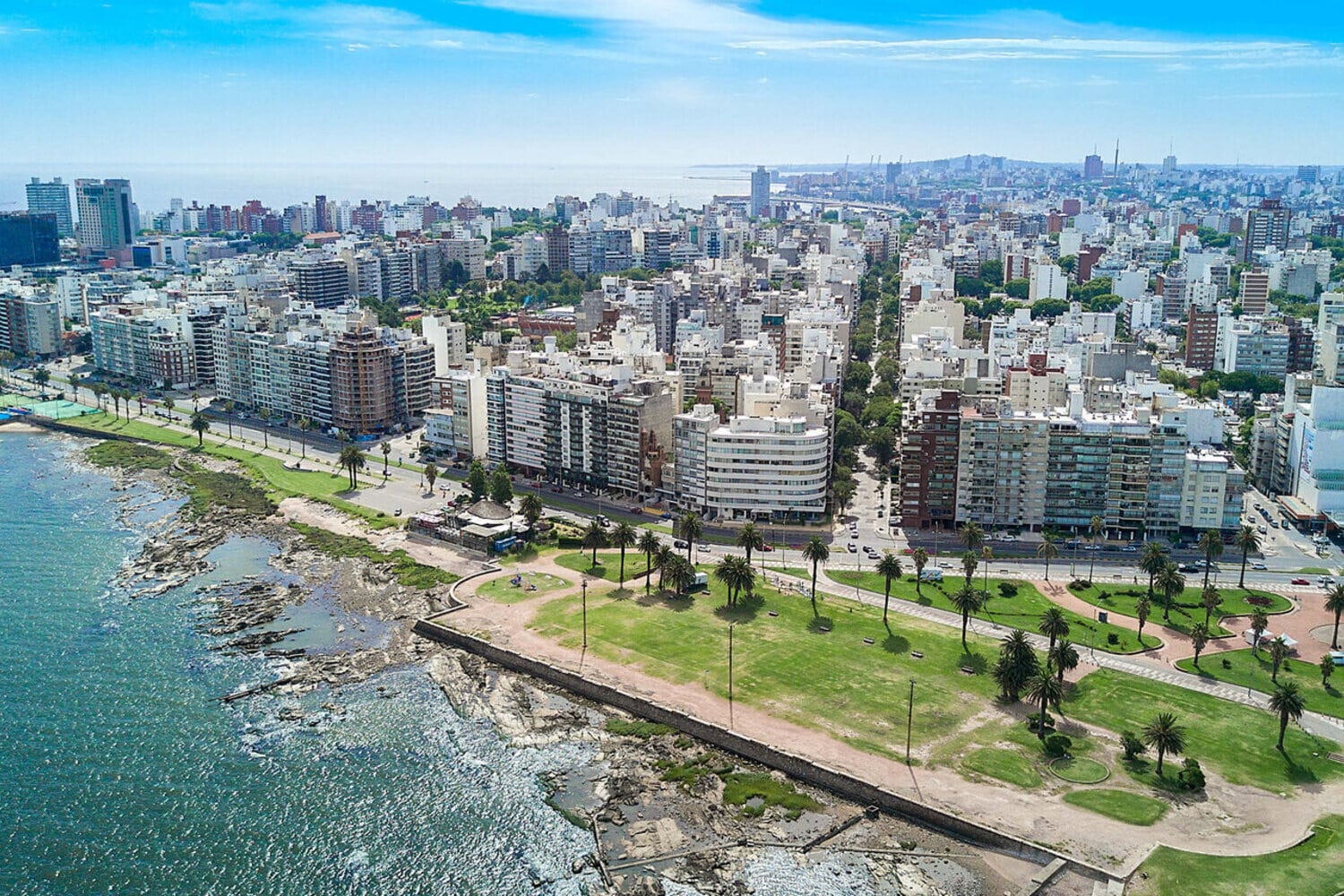Montevideo is the capital of Uruguay, blending colonial heritage, the calm atmosphere of a coastal city, and vibrant Latin American culture. This city charms visitors with its architecture, wide beaches, rich history, and unique character. Often overshadowed by more famous neighbors like Buenos Aires or Rio de Janeiro, Montevideo truly deserves individual attention. You might not know how diverse and extraordinary this city is, hiding many surprising features and cultural gems. Here is a collection of interesting and informative facts about Montevideo that will help you get to know it better.
- Montevideo is the southernmost capital city on the South American continent. It is located along the Atlantic Ocean, at the mouth of the Río de la Plata. This location provides the city with a mild maritime climate, with warm winters and moderate summers.
- There are several theories about the origin of the name Montevideo. One suggests it comes from the phrase “Monte VI De Este a Oeste” meaning “sixth hill from east to west” as noted by Spanish sailors. Another theory connects it to the Portuguese phrase “Monte vide eu” meaning “I saw a hill”.
- The city was founded in 1726 by the Spanish as a military outpost to protect the southern region of the Río de la Plata from Portuguese influence. Since then, Montevideo has played a significant role in the colonial politics of the region. Its historic center still preserves elements from that era.
- Montevideo hosts the country’s main seaport, which handles the majority of Uruguay’s international trade. It is also one of the most modern and deepwater ports in South America. The harbor can accommodate large ocean-going vessels with ease.
- The city is the cultural capital of Uruguay and is known for hosting one of the longest carnivals in the world. The Montevideo carnival lasts over 40 days and features parades, theatrical performances, music, and traditional candombe and murga dances. It is considered the longest-running carnival celebration globally.
- Independence Square is the main plaza in Montevideo, located in the heart of the city. At its center stands a monument to national hero José Artigas, with his mausoleum located underneath. The square is surrounded by important government buildings including the Executive Tower.
- The Salvo Palace is one of the city’s architectural icons. Completed in 1928, it was the tallest building in South America at the time. Designed by architect Mario Palanti, it reflects the influence of European art nouveau and remains a symbol of the city.
- Montevideo is home to one of the oldest public libraries in Latin America, founded in 1816. The National Library of Uruguay holds hundreds of thousands of books, manuscripts, and archival documents. It plays a key role in preserving the nation’s cultural heritage.
- The city boasts over 20 kilometers of sandy beaches stretching along the Río de la Plata coastline. Residents refer to the coastal strip as the Rambla, which is also the name of the scenic promenade that runs through the city. It is a favorite spot for walking, cycling, and watching the sunset.
- Montevideo has a modern public transport system that includes buses, bicycle paths, and a wide network of taxis. Although the city lacks a subway system, its compact size makes transportation efficient. Electronic ticketing is widely used for public transportation.
- The city houses the headquarters of several regional organizations, including the Latin American Integration Association. Montevideo actively participates in regional diplomacy and economic cooperation. This makes it a key political hub in South America.
- Uruguay has one of the highest literacy rates in Latin America, and Montevideo is the educational center of the country. It is home to public and private universities, including the University of the Republic, founded in 1849. Students from across the country move here for higher education.
- Montevideo’s creative industries are thriving, including film, music, design, and information technology. The city hosts numerous festivals, art fairs, literary events, and film screenings. Municipal programs support young artists and local startups.
- Montevideo is considered one of the most peaceful and livable cities in South America. It is praised for its safety, access to public services, and high quality of life. Many expatriates choose Montevideo as their long-term residence.
- Football holds a special place in Montevideo’s culture. The first FIFA World Cup was held here in 1930, and the Centenario Stadium was built for that event. The stadium remains active and houses a museum dedicated to football history.
- Montevideo’s culinary scene is a fusion of Spanish, Italian, and local traditions. One of the most famous dishes is asado, a type of grilled meat cooked over charcoal, commonly served in parrilla restaurants throughout the city. The Mercado del Puerto market is renowned for its vibrant atmosphere and food culture.
- The city features numerous green areas and parks, the most famous of which is Rodó Park. It offers a lake, sculptures, tree-lined paths, and attractions for children. Locals enjoy picnics, outdoor sports, and leisurely activities in this peaceful environment.
These interesting facts about Montevideo show how culturally rich, historically significant, and comfortable the city truly is. Its welcoming atmosphere, balanced lifestyle, and cultural diversity make it a unique place in South America. Montevideo surprises visitors with its calm charm and inspiring energy. If you are seeking new destinations or life experiences, this city is certainly worth your attention.





